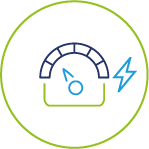
Lifetime of wind turbine
Operators should employ early lifecycle assessments and use modern algorithms to predict aging issues. This will ensure prolonged turbine lifespan.
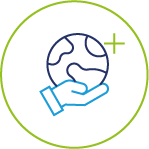
Scaling to new wind farms
Energy producers are expanding their renewable investments. Managing diverse projects necessitates DTs that support the identification of interesting locations, design and conditions.
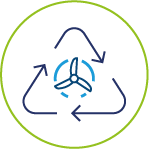
Repowering existing installations
Owners of wind farms, operational for over 15 years, can benefit from repowering with newer technology. Decisions will hinge on precise predictions and simulations.
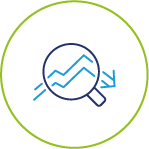
Optimise revenues
Many wind farms need deeper maintenance analysis. Challenges include efficient fleet maintenance, strategic market participation, and revenue optimisation using DTs for superior cost-benefit insights. DTs can provide an accurate cost benefit analysis based on the predicted performance of the turbines.
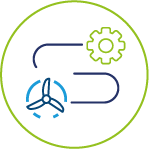
Risk assessment
Utilising DTs can help identifying the potential risks and the formulation of effective risk management strategies including contingency plans. By doing so, DTs can support in establishing robust wind energy projects and enhance their successful implementation likelihood.
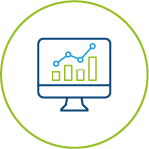
Current and real-time data
Wind turbine projects operate in an ever-changing and dynamic environment. For effective use of DTs, up-to-date and real-time data need to be provided. Collection, updating and synchronisation of models can be improved in the base of an open-source and multi-stakeholder platform.
How will the TWINVEST project shape and influence its surroundings?
The Digital Twins technologies
The integration of DT technologies in the wind energy sector is establish to have a relevant impact on several stakeholders in the European wind energy value chain. The Digital Twin represents a significant leap in operational efficiency, reliability, and cost-effectiveness but also in decision making for future investments in this sector. The key benefits for each of them are:

Industry (OEMs and Wind Farms Operators)
- Providing assets data sets for new component’s research and development and more accurate models building;
- Identify bottlenecks and inefficiencies and optimise current operations
- Validate and evaluate plans for upgrading or expansion of the farms.
Investors
Accurate simulations of future investments for informed decisions based on the predictions of wind farm performance across Europe.
Academia and RTOs
These stakeholders are ideally placed to lead the development of both virtual and predictive digital twins. They are able to couple their research capabilities to create and enhanced the capabilities of digital tools, ensuring that these are accessible to a wider audience by promoting open-access software.
Society
Society will benefit from a sustainable lower renewable energy prices. Additionally, integrating DT into educational curriculums, the society can foster the development of new skills that will facilitate the adoption of cutting-edge technologies for the benefit of a more energy competitive society.
Government and policy makers
They could benefit from the realistic simulation environment of the DT to plan policies and regulations across different parts in Europe to facilitate investment in offshore wind energy at the right spots.
Funding agencies
Especially those dedicated to fostering industrial innovation, could benefit from the DT simulation environment when planning their projects objectives. Fund allocation towards onshore wind energy projects could be mobilised for the right spots, specially focusing on infrastructure to support these developments.
